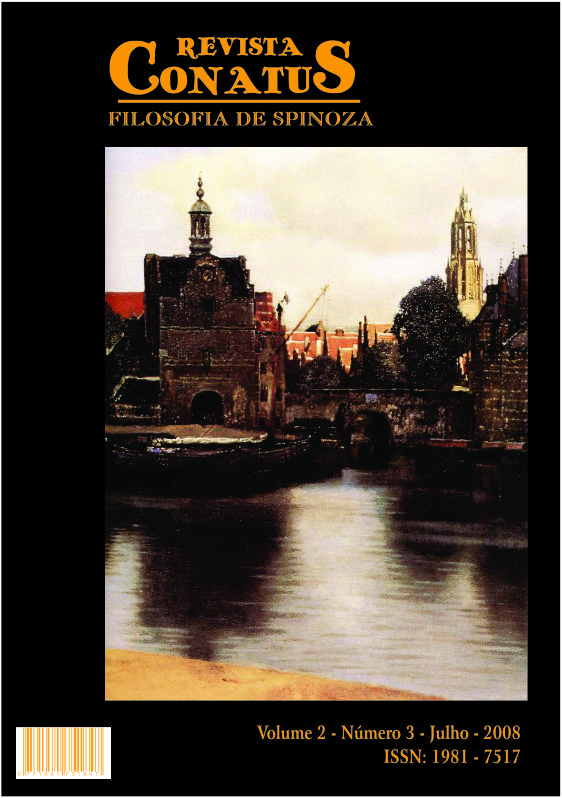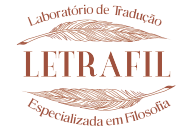Two Problems with Spinoza’s Argument for Substance Monism
Palavras-chave:
Substância. Monismo. Atributos. Modos. Ontológico.Resumo
Na Parte I da Ética, Spinoza apresenta sua tese central metafísica, que há somente una substância no Universo. Esta substância é identificada com Deus, ou a Natureza, e é pensada como numericamente uma só, infinita e existindo necessariamente. Jonathan Bennett (1984) tem discutido que o argumento para o monismo substancial apoia-se acima de duas premissas. Estas são: (1) “Deve haver uma substância com cada atributo possível”, e (2) “Não pode haver duas substâncias com um atributo comum” de onde segue a conclusão: “Não pode haver mais de uma substância”. Adoptando a estrutura de Bennett, a autora discute que Spinoza usa seu argumento ontológico para trazer à existência uma substância que possui infinitos atributos. A autora argumenta também que a pretendida demonstração (2) de Spinoza não regula completamente os possíveis cenários que ele necessita regular com o fim de estabelecer seu monismo substância.
Abstract
In Part I of the Ethics, Spinoza presents his central metaphysical thesis that there is only one substance in the universe. This substance is identified with God, or Nature, and is thought of as numerically one, infinite and necessarily existing. Jonathan Bennett (1984) has argued that the argument for substance monism rests on two premises. These are: (1) “There must be a substance with every possible attribute”, and (2) “There cannot be two substances with an attribute in common”, from which the conclusion “There cannot be more than one substance” follows. Adopting Bennett’s structure, I argue that Spinoza uses his ontological argument to define into existence a substance that possesses infinite attributes. I also argue that Spinoza’s alleged demonstration of (2) does not fully rule out the possible scenarios that he needs to rule out in order to establish his substance monism.
Key-words: Substance. Monism. Attributes. Modes. Ontological.










